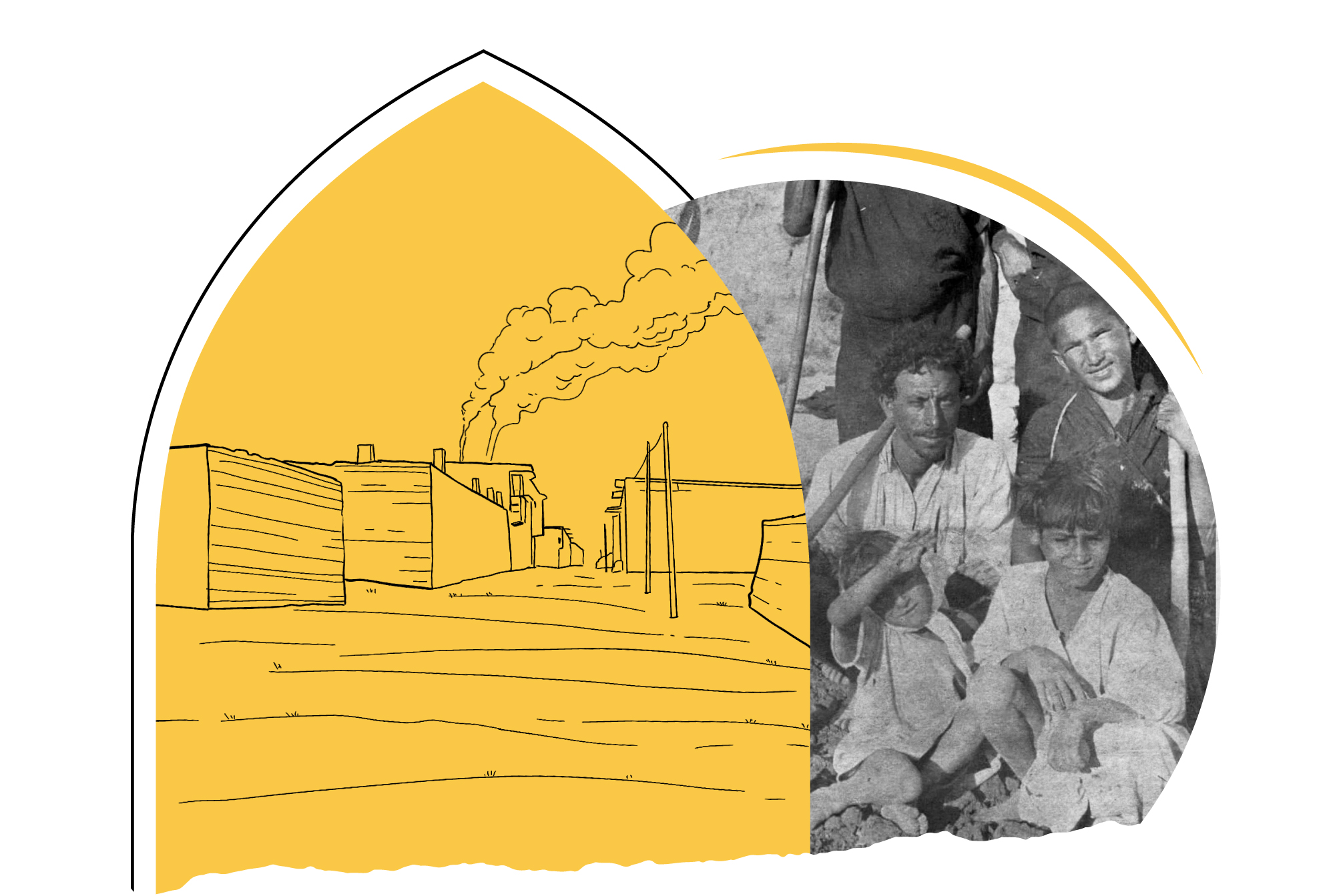
After Suppression of Bani Tarf Uprising (1945)
Shah's Forces Forced them to Starve, Thirst and Die on Foot to Tehran
Iran benefited from the changes in the post-World War I world as Shah Reza Pahlavi colluded with Britain to swallow Ahvaz, overthrow its Arab ruler, Sheikh Khazal, and arrest him in the year (1925), exiling and killing him thereafter.
Since the Iranian occupation of Ahvaz, the unjust policies of the brutal Persian rule have not stopped, in return for which the Arabs of Ahvaz staged many uprisings against Tehran and its policy calling for the impoverishment of Ahvaz and the Persianization of land and population. Lebanese researcher, Aida Al-Ali Sari Al-Din, provides an explanation for the Iranian racist policy: “With regard to national facts, it is known that Persian hostility to nationalities is a comprehensive movement that does not concern Arabistan alone. The focus of that hostility in Arabistan was born as a reaction of the Persians to the Arab leadership in the Islamic era”. This is how the researcher sees the Persian racial policy towards non-Persian nationalities in Iran, with Persianization policy focusing on the Ahvazi Arabs, as a result of the Persians historical complex towards the supremacy of the Arab rule of Persia in Islamic era.
It was natural for Ahvazi Arabs to rise up in successive uprisings against these racist Persian policies. Perhaps the most important of these uprisings was that of Bani Tarf, especially the second Bani Tarf uprising that took place in 1945. The spark of this uprising extended to include many famous Arab tribes in Ahvaz, such as Bani Sala, Bani Lam, Al-Shorfa and Al-Muhaisen. This uprising is attributed to Bani Tarf, and they are from the original Arab tribes that migrated to live in Ahzaz hundreds of years ago, where they settled in the region. Bani Tarf were known for their originality and dissatisfaction with humiliation.
The circumstances of this uprising were linked to the local, regional and global variables at the end of World War II, as well as Tehran’s constant desire to impose Persian centralism on non-Persian regions, especially Arab Ahvaz. However, the direct reason was the Persians’ attempt to impose a change in Arab fashion, as well as the disarmament of these tribes. It is well known how Arabs are closely liked to their uniform and weapons.
The second Bani Tarf uprising broke out in (1945), when Ahvazi Arabs, who had nothing but light weapons, faced the legions of the Persian army, equipped with heavy weapons. At the beginning of the uprising, the Arab tribes were superior over the Persian forces and succeeded in imposing their control over many Persian cities, villages, police stations and military fortifications. That uprising continued for several months, during which Persian iron fist was weakened before Arab tribes.
Tehran was worried of the success of the revolution in Ahvaz, fearing that the winds of the revolution may move to many other regions in Iran. Accordingly, the Persian war machine prepared its equipment and sent military mobilizations to Ahvaz, reinforced with armored vehicles. They even used military combat aircraft to suppress that uprising. The task of the Persian army was not an easy matter due to the valor of the Arab tribes in defending their identity, in addition to benefiting from the geographical nature of Ahvaz; with the abundance of rivers, swamps and palm groves that constitute a natural barrier that prevents the rapid advancement of Persian military vehicles.
In the face of that resistance on the side of Arab tribesmen, the Persian war machine resorted to a scorched earth policy. Hence, Persian forces bombed villages, cities and gatherings of Arab clans, destroyed homes and burned crops, in a major massacre that Ahvaz had not witnessed before. Although they used military aviation in that terrorist act, Arab tribes withstood for a while, and there are local historical accounts that speak of the success of the fighters of the Arab clans in shooting down a Persian plane with their light weapons.
In the face of that resistance, the Persian war machine intensified its military power and was able to suppress that uprising. Persian racism was not content with suppression, but attempted to humiliate Ahvazi Arabs and break their resolve. Persian forces resorted again to the policy of forced displacement and deported about 150 Ahvazi Arabs to Tehran in a miserable manner by forcing them to walk to Tehran on foot. Most of them were from Bani Tarf, including many women, children and elderly people. Only 40 of them arrived in Tehran as the others died from hunger, disease and harsh climate. Some collected some historical testimonies from those who survived, where they talked about what they witnessed with their own eyes from the tragedy of walking to Tehran: “He who could not walk was crushed by the armored cars of the Iranian army or left in the open to feed the wild beasts or die of hunger and thirst”.
Iranian vehicles ran over children, women and the elderly from Bani Tarf Arabs.

Ali Nema Al-Helou summarizes the aim of the Persian authorities in committing all kinds of war crimes during the suppression of the second Bani Tarf uprising, saying: “That incident was a tragedy that people did not know, committed by Iran against the Arabs of the region with all cruelty and hatred, with a view to instill terror in their souls and stone their feelings, so that no person would demands his right and freedom, or he would face the fate of the martyrs of Bani Tarf”.


- Amer Al-Dulaimi, Iranian Occupation of the Arab Region of Ahvaz (Amman: Academicians Publishing House, 2020).
- Aida Al-Ali, Ahvaz, Arabistan, an Emirate in Oblivion (Beirut: Bissan for Publishing and Distribution, 2016).
- Ali Al-Helou, Ahvaz Revolutions and Organizations 1914-1966 AD (Najaf: Al-Ghari Modern Press, 1970).
- The Iraqi Ministry of Information, History of Arabistan and the Current Situation in Iran (Baghdad: Ministry of Information Press, 1971).

